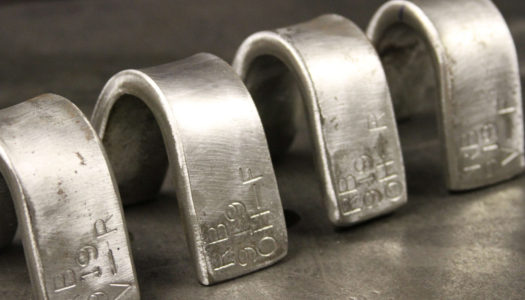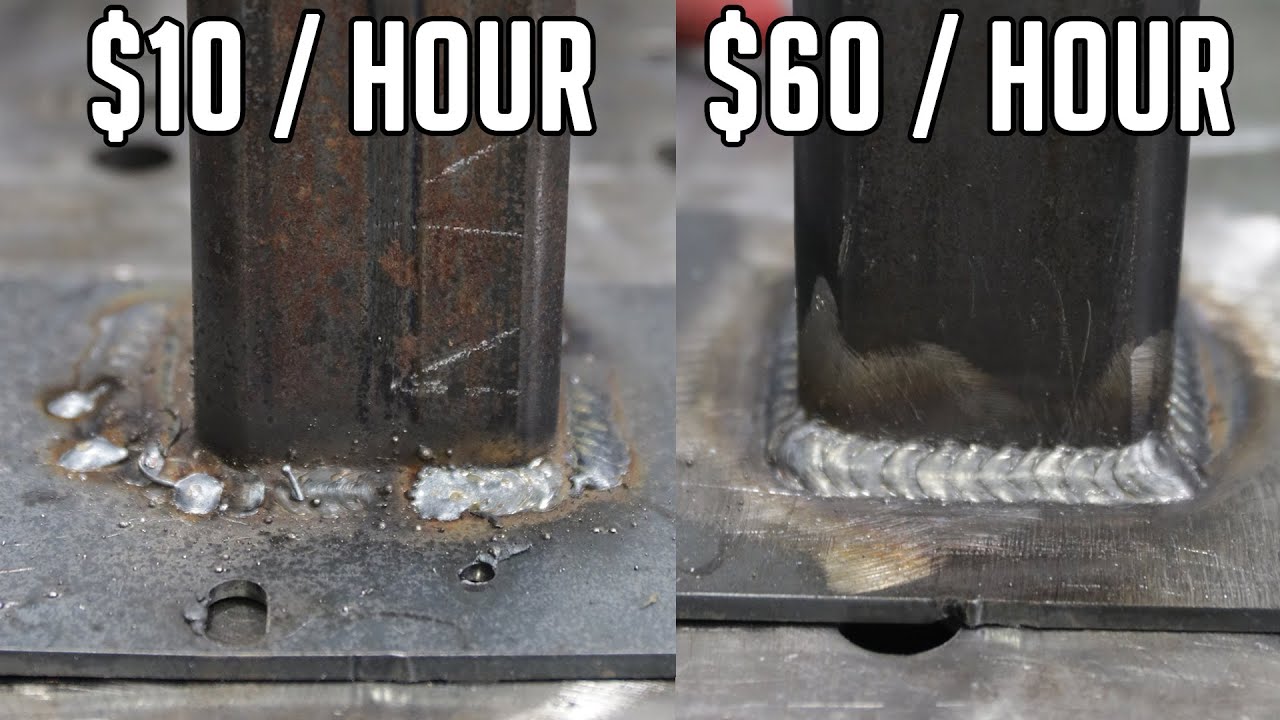Welding Certification Hacks: Prep Like a Pro
Going after a welding certification is a smart move for any professional who wants to level up—whether you’re chasing a higher paycheck, aiming to qualify for more contract work, or preparing to bring cutting-edge welding technology into your shop. But certifications aren’t won by chance. They test your ability to apply standards under pressure, navigate code references quickly, and demonstrate consistent technique. This guide shares practical, field-tested hacks to help you prep like a pro: build a doable study plan, design practice tests that mirror the real exam, and use code references efficiently during tests. If you’re part of a fabricating team, a welding technology enthusiast, or a business owner evaluating new capabilities, these strategies will help you pass with confidence while staying practical and focused. AWS welding certification requirements
Prep Mindset and a Solid Study Plan
Success starts well before you sit down with a test. A reliable prep mindset paired with a concrete plan reduces anxiety and increases retention. Start by outlining the scope of your certification exam—whether it’s an AWS, an AWS D1.1 structural, or a general welding credential—and then translate that scope into a 4–8 week study schedule. Treat your plan like a small project: set milestones, assign topics to specific days, and build in review weeks to reinforce hard concepts. AWS D1.1 Structural Welding Code – Steel
- Define the exam map: list out the welding processes, joint designs, material specs, and inspection criteria likely to appear.
- Chunk topics into 30–60 minute study blocks to fit busy welding schedules and reduce procrastination.
- Incorporate deliberate practice: target your weakest areas first, then reinforce them with spaced repetition.
- Schedule weekly mock exams that match the duration and difficulty of the real test.
Tip: customize your plan for your process focus. If your work emphasizes GTAW (TIG) stainless applications, make sure your plan allocates more time to heat input control, gas purity considerations, and procedure qualification test (PQT) specifics. The year ahead is your chance to blend welding technology trends with a solid exam strategy—align your study plan with both career goals and certification requirements.
Designing Effective Practice Tests
Practice tests are the real productivity boosters for certification prep. They do more than reveal gaps; they condition you to think in the exam’s rhythm, manage time, and apply code references under pressure. Build practice tests that resemble the actual format: multiple-choice questions, short-answer prompts, and a few procedural tasks that mimic hands-on exam portions when applicable.
- Use a mix of problem types: quick recall questions for codes, interpretive questions about weld procedures, and short calculations (e.g., heat input, weld metal deposition rate).
- Limit the time per block to train your intuition for pace—this helps avoid first-pass mistakes under time constraints.
- Track answers and categorize mistakes by topic: material specs, joint configurations, heat input, shielding gas, or inspection criteria.
- Review each practice test as soon as you finish. Create a one-page reference of the topics you missed with quick code pointers.
When possible, mirror the exam’s environment. If your test book includes a code reference binder, practice with a similar setup—highlighted sections, indexed tabs, and a quick-access table of contents. If you’re preparing for a hands-on portion, simulate real-world timing and environmental conditions to reduce surprises on exam day. Welding practice exam resources from NDE/NDT Training Center.
Using Code References Efficiently During Tests
One of the biggest efficiency gains in welding certification exams is mastering how to locate the right information quickly. Code references are your map; knowing where to flip saves precious minutes and reduces guesswork under pressure. A practical approach is to build a personal, exam-ready index of the most-tested sections, plus a color-coded tab system for fast navigation. Welding Procedure Specification (WPS) guidelines
- Identify high-yield sections well before the test—these are sections with common questions or critical acceptance criteria.
- Tag frequently referenced clauses with colored tabs or sticky notes for immediate visibility during the test.
- Practice “flipping” drills: given a scenario, locate the relevant code section in under a minute and summarize the required standard in your own words.
- Create a one-page cheat sheet of constants (like typical weld joint names, filler metal classes, and common defect types) that aren’t allowed on the exam but help you think clearly during questions.
Efficient use of code references isn’t cheating—it’s proof of professional rigor. In the real world, you’ll consult codes as you design procedures, qualify welds, or validate inspection criteria. Bring that disciplined approach to your certification prep, and you’ll be able to translate test performance into on-the-job reliability.
On-Test Tactics and Time Management
On test day, time is your most valuable resource. The best prep plan won’t help if you panic when you see the clock. Build a simple on-test routine and stick to it, even if you’re tempted to rush the harder items first. Welding Inspector Exam Guide (CWI)
- Read every question once, then categorize it as easy, medium, or hard. Tackle easy questions first to secure quick points and build confidence.
- Mark uncertain items and move on. Return after finishing the rest of the exam with fresh eyes.
- Set a timer for each section or problem block and check progress midway. If you’re behind, adjust your pace rather than sacrificing accuracy.
- At the end, re-check units, tolerances, and heat-input calculations. A small arithmetic slip can cost you points even if you know the concept.
- Calibrate your mental workflow: skim, interpret, apply code references, verify, and move on. Consistency is more valuable than bursts of brilliance under pressure.
Practical preparation also means aligning test-day logistics with your workflow. Ensure you have the right tools—calipers, a calculator, a compact code reference if allowed—and practice with a similar kit to minimize surprises on exam day.
Applying Certification Knowledge to Business and New Tech
Certification isn’t just a credential; it’s a ladder to broader business impact. When you understand codes and procedures deeply, you can design better welding solutions, lower the risk of nonconforming work, and communicate more confidently with customers and regulatory bodies. If you’re running a welding shop or a startup exploring new tech, certification literacy translates into better risk management, clearer QC protocols, and stronger proposals for clients who demand traceability and compliance. Welding automation and robotics trends
- Integrate code-driven QA checks into your production workflow to improve consistency and reduce rework.
- Leverage certification knowledge to evaluate new processes and equipment—e.g., automated welding cells, advanced robotics, or novel shielding gas blends.
- Use test results to tailor staff training: target gaps in procedure knowledge, instrumentation handling, and inspection criteria.
- Align certification milestones with business goals, such as expanding service lines or pursuing new contracts that require credentialed welders.
As technology evolves, the most valuable welders aren’t just those who can strike an arc—they’re the ones who apply code-based reasoning to design decisions, process optimization, and quality assurance in real-time.
Process-Specific Tips for Common Welding Methods
Most welding certifications test familiarity with several processes. Here are condensed, practical tips for the most common methods you’ll encounter on exams and in the field:
- : Know shielding gas choices for different metals, the effect of wire feed speed on heat input, and how spray vs. pulse transfer changes bead profile. Practice calculating heat input and validating surface finish requirements.
- TIG (GTAW): Master root-pass control, precise amperage, and gas flow stability. Be ready for questions on weld quality influence from welding current, balance, and amperage control in thin sections.
- Stick (SMAW): Expect questions on electrode selection, negative/positive polarity implications, and defect recognition such as porosity or slag inclusions. Practice visual inspection criteria and attainable weld radii.
- Flux-Cored (FCAW): Understand differences between self-shielded and dual-coat flux-cored wires, and their impact on deposition rate and spatter. Be prepared to discuss how to maintain weld integrity with varying travel speeds.
For exams, create quick reference notes that link each process to its typical defects, inspection standards, and common parameters. This makes it easier to recognize what a question is asking and to apply the right code or QC criterion swiftly. Welding process data and parameter charts
Key Takeaways
- Develop a clear study map with weekly milestones; combine theory with timed practice exams to build exam stamina.
- Design practice tests that mimic the real exam format and use them to identify gaps in codes and procedures.
- Use a personalized, well-tabbed code reference system to navigate quickly during tests without losing momentum.
- Adopt on-test routines for pacing, marking, and review to maximize accuracy under time pressure.
- Translate certification knowledge into business value by applying code-driven QA and process optimization on the shop floor.
Conclusion
Welding certification is a powerful credential, and the best way to earn it is through disciplined preparation that mirrors the test environment. By building a thoughtful study plan, designing realistic practice tests, and mastering code references for rapid retrieval, you’ll approach exam day with confidence rather than nerves. When you connect certification success to real-world welding innovation—whether you’re adopting new equipment, exploring advanced processes, or launching a fabrication startup—the payoff is clear: better quality, faster turnaround, and a competitive edge in a fast-changing industry.



